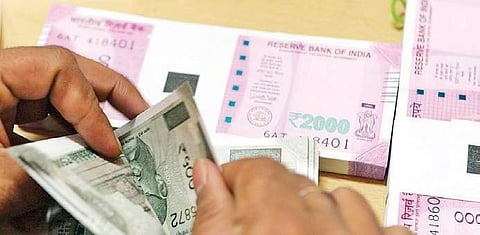

You can see it on the streets—India is back at work. Traffic jams are back, as is the jostling in the markets. In Delhi, where I live, at least, that familiar feeling of wanting to wear a mask (not to protect ourselves from Covid-19, but more to shield us from vehicle fumes) is back. Oddly, this time, that feels reassuring.
The financial services group Nomura has noted that economic activity in the country is almost back at pre-Covid-19 levels. Ratings firm S&P has predicted a 10% growth during the year beginning 1 April 2021. Double digit growth, of course, is what the Economic Survey too predicted for next year.
The question now to ask is not merely by how much things like offtake of power, Goods and Services Tax collections, sale of vehicles (two-wheelers, especially) grow, and in what time, but what India’s next phase of growth would look like.
There is little doubt, in my mind at least, that if 2014 was a pivot in India’s growth trajectory after 1991, a new era begins now, after the pandemic. Since 2014, the Indian economy has been undergoing a spring cleaning—in some places I have referred to this as the Samudra Mathan of the economy—where a lot of effort has gone in fixing the very basic parameters of growth. Arteries choked with many a bad regulation have been scrapped clean. Runaway sectors like real estate have been bound to better regulation; they have now seen some marquee companies enter the space, replacing others who played by the jungle rules of the past.
The nature of interface between the state and the citizen has, in some ways, undergone a drastic change (and is changing further every day) due to digital technologies. With Covid-19, India has shown that not only can it handle a pandemic well, but also manufacture lifesaving drugs and vaccines for the world. The post-Covid era, which is now beginning, offers an opportunity to rethink the very parameters and dimensions of what growth means in the country. So how would this phase be different—indeed, how could it be? First, the growth trajectory since 1991 was a tide that lifted millions of boats, but it was fundamentally a top-down model of growth. We now know that while trickle-down prosperity might work in some areas, it also leaves itself open to criticism that it is too much for the too few.
India now has, in this phase, an opportunity to seed growth at the very grassroots. Digi-tal technology is allowing the smallest of enterprises access to and benefit from a countrywide, and even global, customer base. But in order to succeed, millions need more than just a digital buying and selling interface. Therefore, the focus on better nutrition (monitored often in rural areas by anganwadis with mobile phones loaded with nutrition monitoring software) and the emphasis on building roads to the remotest of places is not just about connectivity, but about access to a mindset of enterprise.
To understand what the biggest problem was of the post-1991 growth phase, you need to understand how important the idea of access is in India. The curation of access, and its restrictions, has been made into almost an art form in the country. While liberalisation made us more egalitarian, it did not make us equitable enough because many of the institutions at the very top of the food chain remained intact. How could it be when the very tools of our society, from identification to access, remained redolent with privilege?
It is only by demolishing that very edifice of access denial that real democracy and opportunity can percolate to the grassroots. To achieve this, there must be a tangible sense of access, a sense that in very material terms—through the use of the same road, or the same speed internet connection, the same identification tool or the same study material, the same regulations and the application of laws—things
are uniform. What Indian society needs the most, perhaps, is demonstrable egalitarianism. An enforced everyday sense that citizens in a democracy have the same rights by law—in both letter, and spirit. And violations, no matter by who, brings forth the same punitive measures.
Samudra Manthan is a process when the devas and the asuras churned the ocean to reveal the nectar of life, amrit. This, then, should be the nectar, the amrit, that emerges from our churning times, a growth that begins from below rather than from the top, and which triggers a sense of egalitarianism in our society.
Hindol Sengupta (Views are personal) (hindol.opinion @gmail.com)
VP & Head of Research at Invest India, GoI’s national investment promotion agency